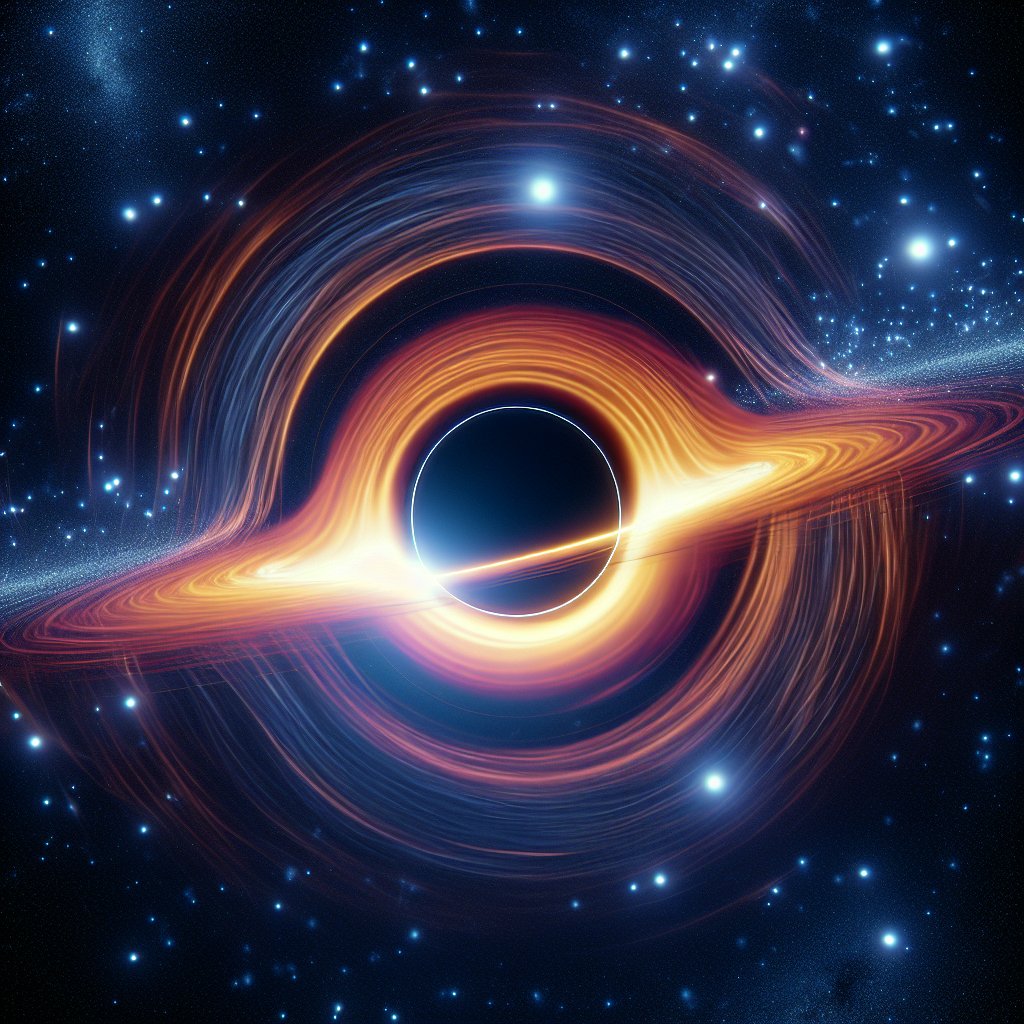Black holes, the enigmatic cosmic entities with gravitational pulls so strong that not even light can escape, have long fascinated scientists and the public alike. Yet, the concept of black holes emitting light seems paradoxical. This apparent contradiction is at the heart of the theory of Hawking radiation, proposed by the renowned physicist Stephen Hawking. This article delves into the intricacies of this theory, exploring how black holes can emit light and the implications of this phenomenon for our understanding of the universe.
The Nature of Black Holes
To understand how black holes can emit light, it is essential first to grasp their fundamental nature. Black holes are regions in space where the gravitational pull is so intense that nothing, not even electromagnetic radiation such as light, can escape from them. This is due to the presence of a singularity at their core, a point of infinite density where the laws of physics as we know them break down. Surrounding the singularity is the event horizon, the boundary beyond which nothing can return.
Black holes are formed from the remnants of massive stars that have undergone gravitational collapse. When a star exhausts its nuclear fuel, it can no longer support itself against the force of gravity, leading to a collapse that results in the formation of a black hole. The size of a black hole is determined by its mass, with stellar black holes typically having masses between three and ten times that of the Sun, while supermassive black holes, found at the centers of galaxies, can have masses equivalent to billions of suns.
Despite their name, black holes are not entirely black. They can interact with their surroundings in ways that produce observable effects. For instance, as matter falls into a black hole, it forms an accretion disk, heating up and emitting X-rays and other forms of radiation. However, this radiation is not emitted by the black hole itself but rather by the matter in its vicinity. The true mystery lies in the concept of Hawking radiation, which suggests that black holes can emit radiation from their event horizons.
Hawking Radiation: A Revolutionary Concept
In 1974, Stephen Hawking proposed a groundbreaking theory that challenged the traditional understanding of black holes. According to quantum mechanics, the vacuum of space is not empty but teeming with virtual particles that constantly pop in and out of existence. These particles typically annihilate each other almost instantaneously, but near the event horizon of a black hole, something different can occur.
Hawking suggested that when a pair of virtual particles forms near the event horizon, one particle may fall into the black hole while the other escapes into space. The escaping particle becomes real, and to an outside observer, it appears as if the black hole is emitting radiation. This process, known as Hawking radiation, implies that black holes are not entirely black but can emit a faint glow of thermal radiation.
The implications of Hawking radiation are profound. It suggests that black holes can lose mass over time, eventually evaporating completely. This challenges the notion of black holes as eternal entities and raises questions about the ultimate fate of information that falls into a black hole, leading to the famous black hole information paradox.
The Black Hole Information Paradox
The black hole information paradox arises from the conflict between quantum mechanics and general relativity. According to quantum mechanics, information about a physical system is never lost, even if the system changes form. However, if a black hole can evaporate completely through Hawking radiation, it seems that the information about the matter that fell into it would be lost forever, violating the principles of quantum mechanics.
This paradox has sparked intense debate and research within the scientific community. Various theories have been proposed to resolve it, including the idea that information is somehow encoded in the Hawking radiation itself or that it is preserved in a remnant left behind after the black hole evaporates. Another intriguing possibility is the holographic principle, which suggests that all the information contained within a volume of space can be represented on its boundary, implying that the information about the matter inside a black hole is stored on its event horizon.
Despite these efforts, a definitive solution to the black hole information paradox remains elusive. It is a topic of ongoing research and one of the most significant challenges in theoretical physics, with implications for our understanding of the fundamental nature of reality.
Observational Evidence and Future Prospects
While Hawking radiation is a theoretical prediction, direct observational evidence for its existence remains challenging to obtain. The radiation is incredibly faint and difficult to detect against the cosmic microwave background and other sources of noise. However, scientists are exploring various methods to observe Hawking radiation, including studying black holes in different environments and using advanced telescopes and detectors.
One promising avenue of research involves the study of analog black holes, systems that mimic the properties of black holes in laboratory settings. These analogs can be created using fluids, Bose-Einstein condensates, or other materials that exhibit similar behavior to black holes. By studying these systems, researchers hope to gain insights into the properties of Hawking radiation and test the predictions of the theory in a controlled environment.
As technology advances and our understanding of the universe deepens, the prospects for detecting Hawking radiation and resolving the black hole information paradox continue to grow. The study of black holes and their enigmatic properties remains a vibrant and exciting field of research, with the potential to reshape our understanding of the cosmos and the fundamental laws that govern it.
Conclusion
The paradox of black holes emitting light through Hawking radiation challenges our conventional understanding of these mysterious cosmic entities. While the theory remains a subject of intense debate and research, it offers a tantalizing glimpse into the complex interplay between quantum mechanics and general relativity. As scientists continue to explore the mysteries of black holes, the answers they uncover may hold the key to unlocking the secrets of the universe and the nature of reality itself.










